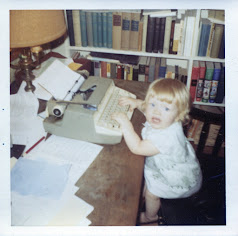It was necessary to purchase many neighborhood properties to provide land for this construction, to protect the neighborhood and to provide faculty housing. This involved the purchase of 204 properties in the immediate vicinity of the campus at a cost of $6.4 million.
Negotiations with the City of Middletown made possible the closing of Mount Vernon Street between Church Street and Wyllys Avenue and the widening of Vine Street and construction of the retaining wall along its east side, both of which streets were important to the later development of Foss Hill; and the closing of Wesleyan Place to make way for the first stage of the Science Center.
Along came the probability that coeducation would be resumed at Wesleyan and the question of how and where the ladies would be located,-on the existing campus, on a new campus adjacent to the men's campus, or at a distance? It seemed wise therefore to acquire land as a "hedge against the future". This was accomplished, 1960 to 1967, by the purchase of four large farm properties south of the city near the Durham line for a total cost of $1.14 million. When, later, it appeared that coeducation could be accomplished on the existing campus, the farm properties were named Wesleyan Hills and the Hill Development Corporation was formed to develop it has a housing project.
All of these things, plus frequent travel to Columbus, Ohio, in connection with the Press, added to the 'normal' day-to-day operations of the University and budgeting and spending and reporting to the President and the Board and its Committees, made up a very busy and interesting life for me. I always regarded it as 'more fun than working'. Nevertheless, somehow I found time to participate in outside activities, such as:
- A corporator of the Liberty Bank for Savings for 27 years.
- A corporator of the Middlesex Memorial Hospital.
- Chairman of the Advisory Board of the Middlesex Area of the Connecticut Bank & Trust Company.
- President of the Rockfall Corporation.
- President of the Russell Library.
- Member of the Board of Finance, the Retirement Board, and the Mayor's Advisory Committee of the City of Middletown.
- Member Republican Town Committee.
- Chairman Woodrow Wilson High School Building Committee.
- Member Town Hall Building Committee.
- Member State Republican Planning Committee.
- Director Middletown Chamber of Commerce.
- Member Commission on Aid to Higher Education, State of Conn.
- A Commissioner of the Jones Fund for Charity.
- A member of the original Advisory Committee on Middletown Redevelopment.
I have found plenty to do to keep me active both mentally and physically. I continued as President of our town library until 1975 when we completed, after many months of study, a revision of its By-laws which did away with the self-perpetuating Board and, under the revised rules, gave citizens nominated by the City membership on the Board. This made possible city financial support of an addition to and renovation of the building, completed in 1984.
I remained until 1977 on the Commission for Aid to Higher Education (Federal grants) to which I had been appointed by Governor Dempsey in 1967. I continued as Commissioner of the Jones Fund until 1975. I took on a few new ones: served for two years on the Finance Committee of the American Council of Learned Societies, and am currently on the Investment Committees of the Church of the Holy Trinity and the Saint Lukes' Home.
The care of our yard at 147 Old Mill Road has very happily consumed most of my fair-weather time. Our interest in the growing of roses began with four bushes we planted 20 or more years ago at 135 Mount Vernon street, and we brought them with us in 1970 when we moved here. Here, although the yard was well-equipped with shrubbery and grass areas, it had no flower beds or vegetable gardens, so we first developed annual and perennial beds and, later, other areas for raspberries, strawberries, vegetables and, finally, seven beds for roses and mums. Over the years we have planted a total of 72 rose bushes of which 48 survive. The survivors are a mixture of Hybrid Teas, Grandiflores, Floribundas, Flora-Teas, Climbers, Shrubs and the 'unknowns' from Mt. Vernon St.
In the next installment of my grandfather's story, he looks back on a life in a time of great change.







No comments:
Post a Comment
If you don't wish to share your email address, please comment anonymously. Thank you.